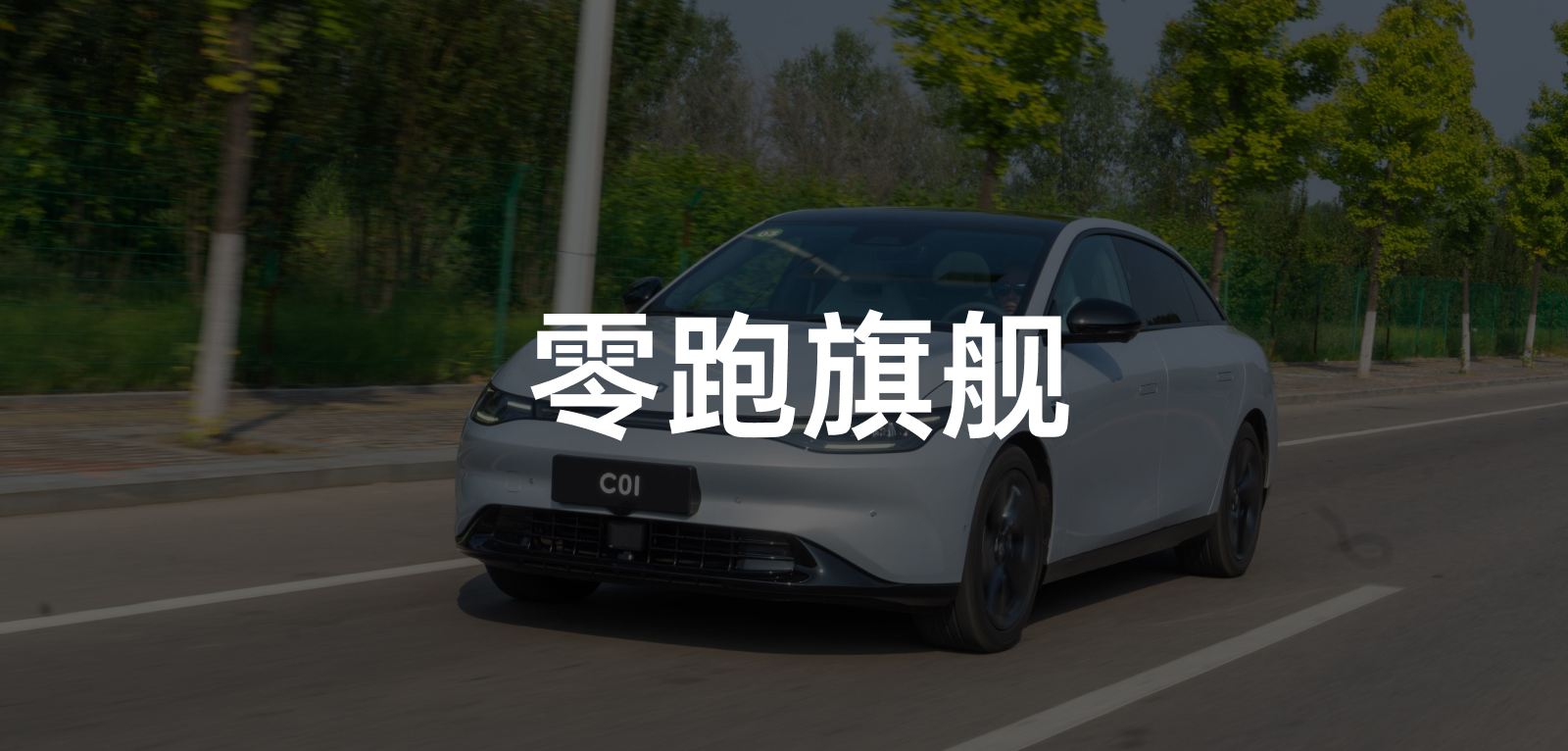Last September, I test drove the LI C11 in Hangzhou, Zhejiang. As a mid-sized electric SUV with a range of 510-610 km and equipped with various luxurious features, it left a “price butcher” label in my mind with a price tag of only 159,800-199,800 yuan.
Despite not reaching the best level in terms of driving pleasure, energy consumption, and auxiliary driving, the LI C11’s attitude towards customer co-creation and the use of quality materials enabled it to achieve a sales record of 35,000 units in the first year after going public. Especially at the beginning of this year, its sales volume has surged, with a monthly delivery of over 6,000 units, successfully upgrading LI’s brand positioning.
On May 10th, LI released its second product in the C series, the LI C01, a mid-to-large-sized car with a pre-sale price of 180,000-270,000 yuan, still taking a cost-effective route. As of now, the order volume has exceeded 100,000 units.
Today, I test drove the LI C01 to see if, after a year of experience and accumulation, LI can continue to break through to the high-end market with the cost-effective C01.
LI’s Family-style Appearance
On May 10th, the LI C01 began pre-sale, and it was also my first time recognizing this mid-to-large-sized sedan through a large number of pictures. However, when the actual car appeared in front of me, my first reaction was that it was not small in size, and its appearance was more impressive than other pure electric products with similar prices, such as the Changan Blue SL03, BYD Dolphin, and NIO ES.
The LI C01 we test drove this time is the 717 Extended Range version, which will also be one of the versions with the highest sales volume in the future. The car paint color is the most popular starry silver from the previous C11, which is a very versatile color scheme.
In addition, there are also metallic black, bright white, and new oxygen green on-site, which share the same color scheme as the C11, you can refer to how they look on the C01. The LI official also introduced an exclusive color scheme of sky gray for the C01, but unfortunately, it was not showcased today.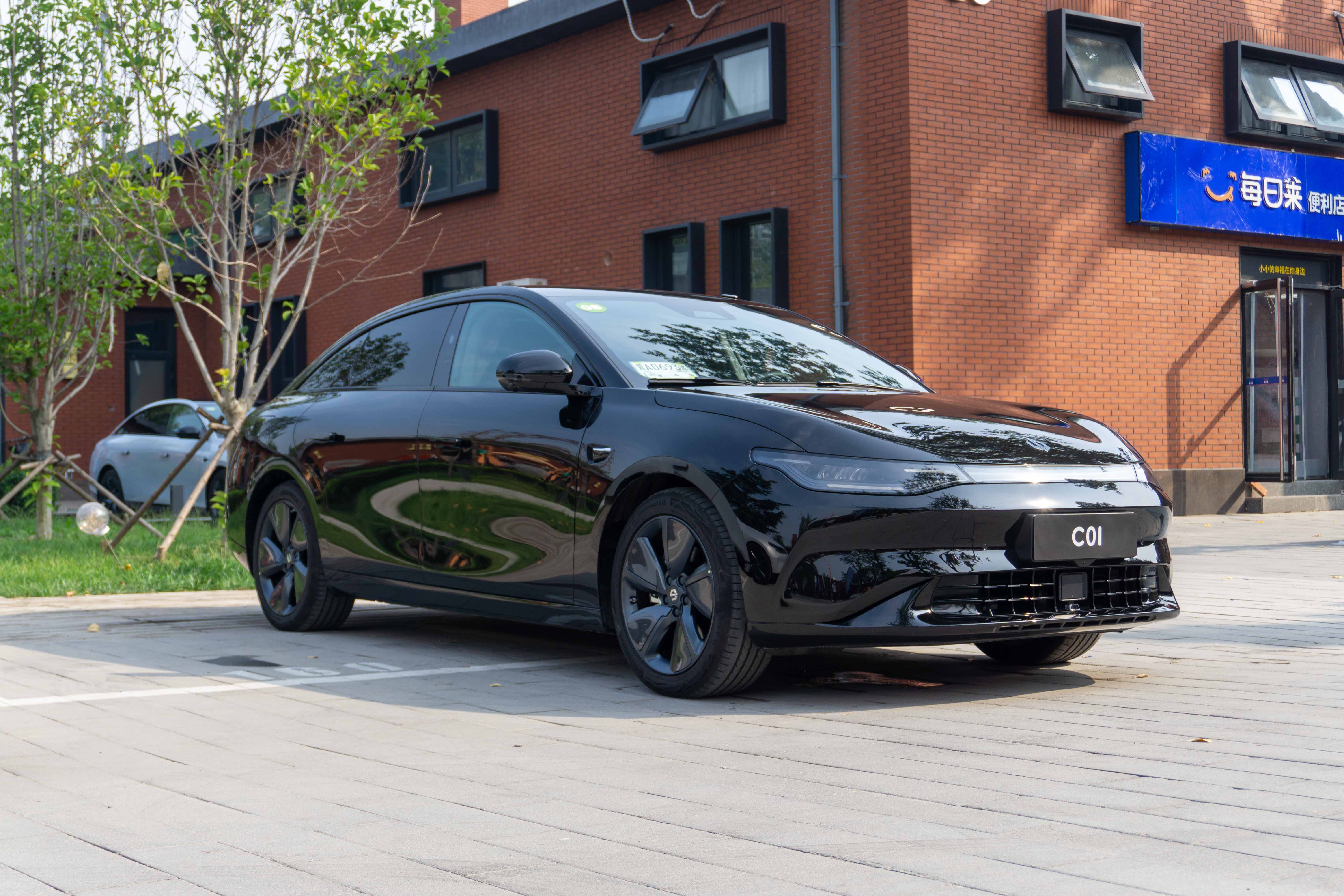


In terms of front-end design, the birth of the Lingzhi C01 finally gave Lingzhi its own family-style appearance, no longer in the state of three cars and three styles. Therefore, on the Lingzhi C01, you can see a lot of design elements of the C11, whether it is the through-type front and rear taillights or the smooth curved lines on the body, both of which inherit the rounded and technological style of the Lingzhi C11.

As a sedan, while retaining the level sense of the front end, Lingzhi C01 has largely flattened its front end in exchange for a lower visual center of gravity. At the same time, the rounded low-profile shape allows Lingzhi C01 to hand in a low wind resistance score of 0.226, which is not amazing, but it is already a relatively excellent wind resistance coefficient in the entire industry.
Looking closely at the front face, Lingzhi C01 has a through-type daytime running light strip, which also partially makes up for the regret that the decoration strip on the C11 does not illuminate. According to Lingzhi’s official introduction, the through-type light strip and headlights of the C01 can be linked to achieve personalized lighting language function.

The length, width and height of Lingzhi C01 are 5,050 x 1,902 x 1,509 mm, and the body length is approaching that of the NIO ET7, with only 51 mm difference, even less than the body width of an iPhone 13 mini (64.2 mm), and it surpasses Audi A6L and BMW 5 Series Li, which are benchmarks for mid-to-large-sized sedans.
 However, in terms of wheelbase alone, the 2,930 mm wheelbase does not give the all-electric LI ONE (C01) any advantage over the Audi A6L and BMW 5 Series Li with fuel-based architectures. In fact, it falls short by a small margin. Moving to its side profile, we can see that the LI ONE does not have the obvious short front overhang design of a rear-wheel drive vehicle. Its body posture is not a pursuit of sporty styling either, but rather a combination of a more subtle sloping roof line and unique elegance.
However, in terms of wheelbase alone, the 2,930 mm wheelbase does not give the all-electric LI ONE (C01) any advantage over the Audi A6L and BMW 5 Series Li with fuel-based architectures. In fact, it falls short by a small margin. Moving to its side profile, we can see that the LI ONE does not have the obvious short front overhang design of a rear-wheel drive vehicle. Its body posture is not a pursuit of sporty styling either, but rather a combination of a more subtle sloping roof line and unique elegance.
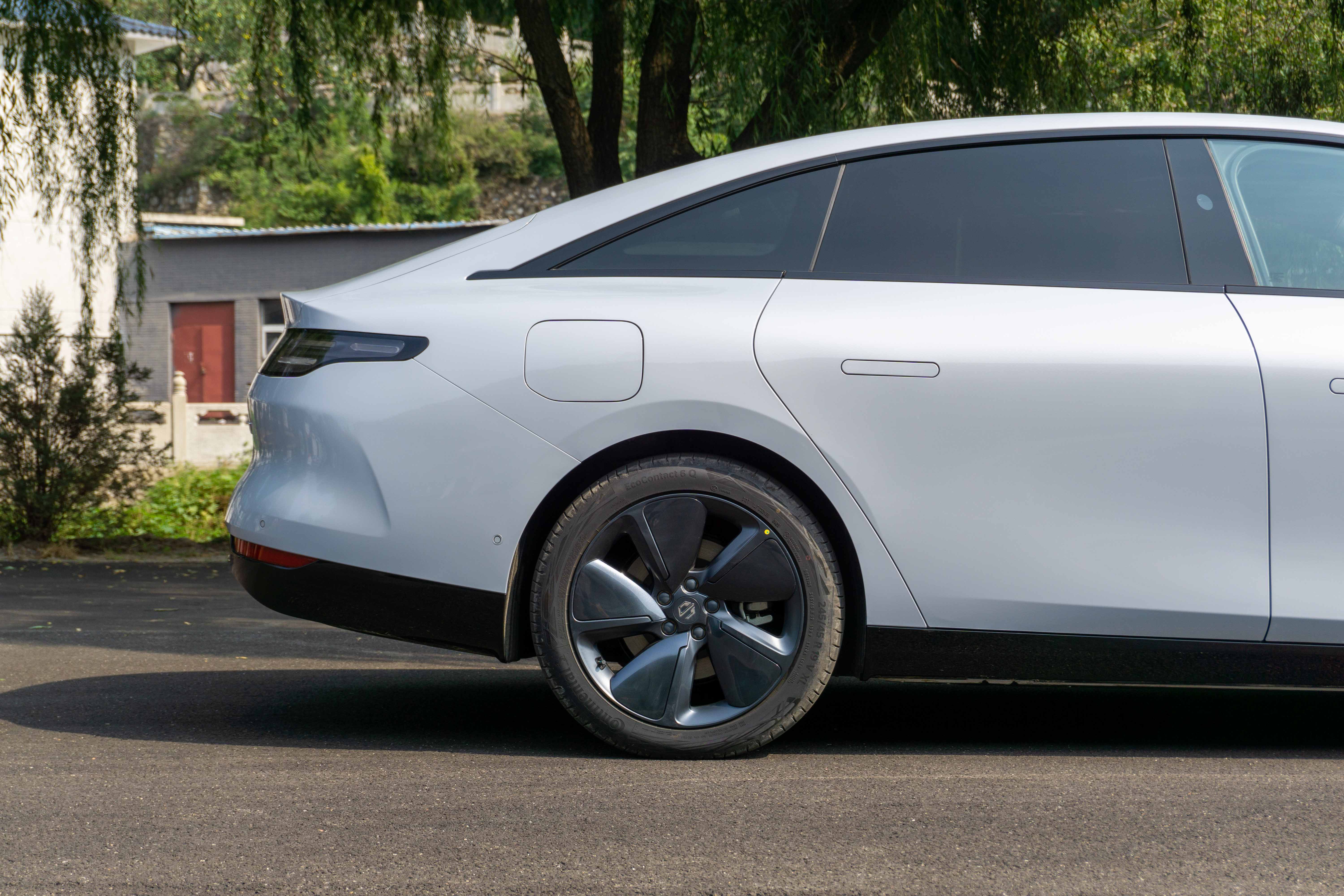

Different from most electric cars with four-wheel design, the longer overhangs front and rear made me have high expectations for the C01’s front trunk.
Upon opening it, the front trunk space of the LI ONE did not give me any surprises. The length, width and depth are all relatively ordinary, and the depth gradually decreases from back to front, forming an irregular storage space. After actual testing, the 40 L capacity can barely hold two medium-large backpacks (29 x 15 x 40 cm), so it is more suitable for storing accompanying charging equipment and tools for daily use.


The trunk space did make up for it. According to official information, the LI ONE’s trunk can hold up to 496 L, which can accommodate 6 pieces of 20-inch carry-on luggage or two 28-inch suitcases. After our actual measurement, the trunk depth of the LI ONE is 121 cm, the width is 105.5 cm, the opening width of the trunk is 100 cm, and the opening height is 53 cm.

 The bottom of the trunk of the Leapmotor C01 has a cover that hides well-organized tools, leaving enough space to accommodate more small items that easily rattle.
The bottom of the trunk of the Leapmotor C01 has a cover that hides well-organized tools, leaving enough space to accommodate more small items that easily rattle.
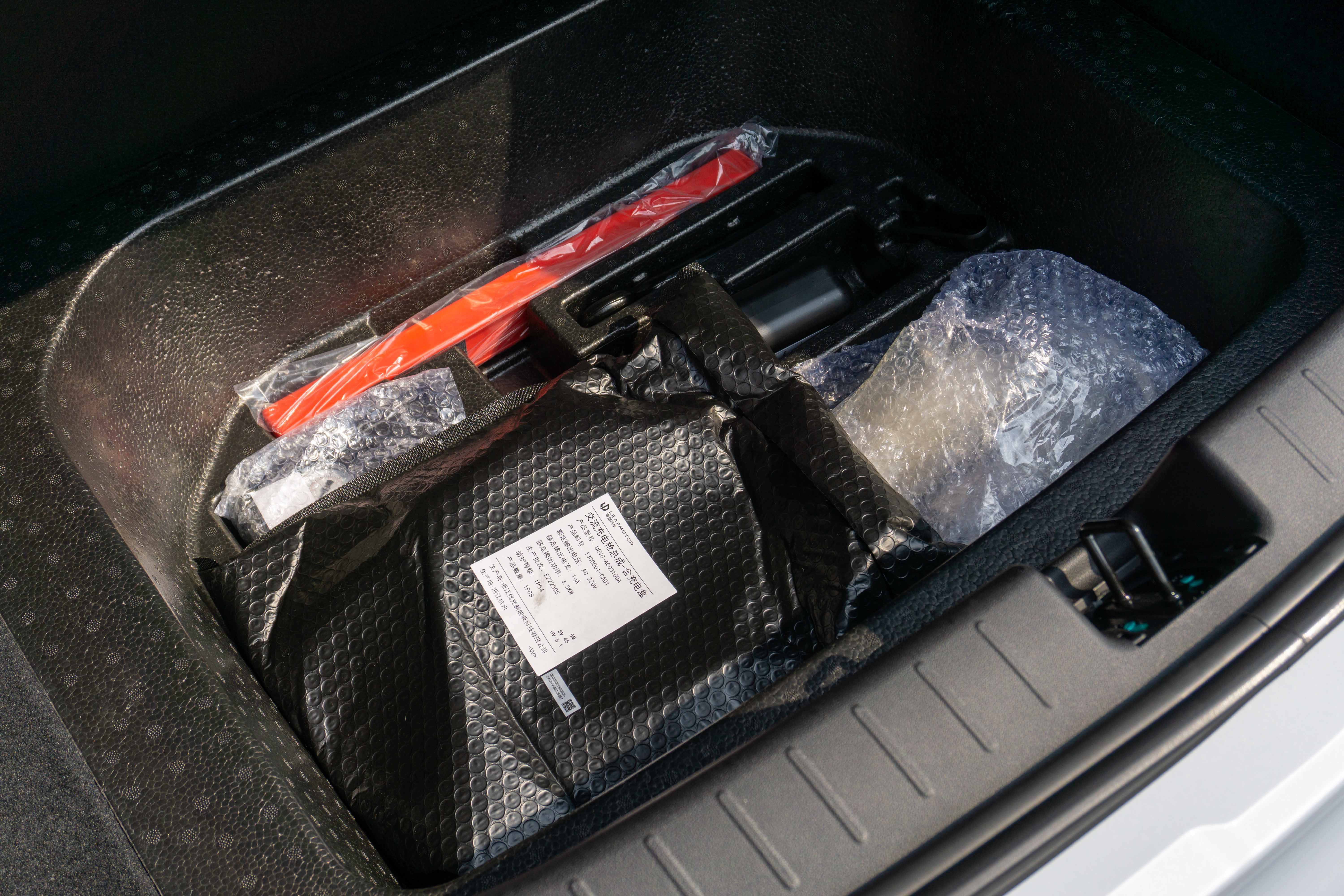
Unfortunately, the trunk of the Leapmotor C01 opens with a button, which may mislead people to think that the vehicle is equipped with an electric tailgate. In reality, it is not equipped, and it will be difficult to add later due to the current hinge structure.

Even with the trunk closed, we can still see the family design of the Leapmotor C01 at the rear, initiated by the C11 model. Both the taillight and the lower guard plate design are reminiscent of the C11. When driving on the road, one can tell from a distance that it is a Leapmotor car.

The rear of the Leapmotor C01 adopts the popular design of a light strip running through it. What sets it apart from other models is that the brand name “LEAPMOTOR” is lit up and added to the light strip. It is easily recognizable at night.

Personally, I like the upwardly curved small tail of the Leapmotor C01. Although we don’t need this tail to provide much downforce, it certainly adds to the sporty and coordinated look of the entire rear end.

Overall, the exterior of the Leapmotor C01 inherits the family style of the Leapmotor brand and makes many improvements in the details. Consideration has been given to both functionality and design, making it more outstanding than before. Also, with the addition of a sloping back to the three-box structure, it can meet the needs of a wider range of users.
 # C01: Combining Youthful Energy and Elegant Sophistication
# C01: Combining Youthful Energy and Elegant Sophistication
On one hand, the C01 by LI Automotive captures the dynamic and vibrant essence that appeals to younger drivers, while on the other hand, it also boasts an elegant look and feel that is attractive to a more mature audience. For those who desire an even more aggressive and sporty design, LI unveiled the Night Laser Edition at the Chengdu Auto Show, with numerous carbon fiber decorations. As stated at the C01 launch event in May, LI C01 is a product that appeals to a wide range of age groups.
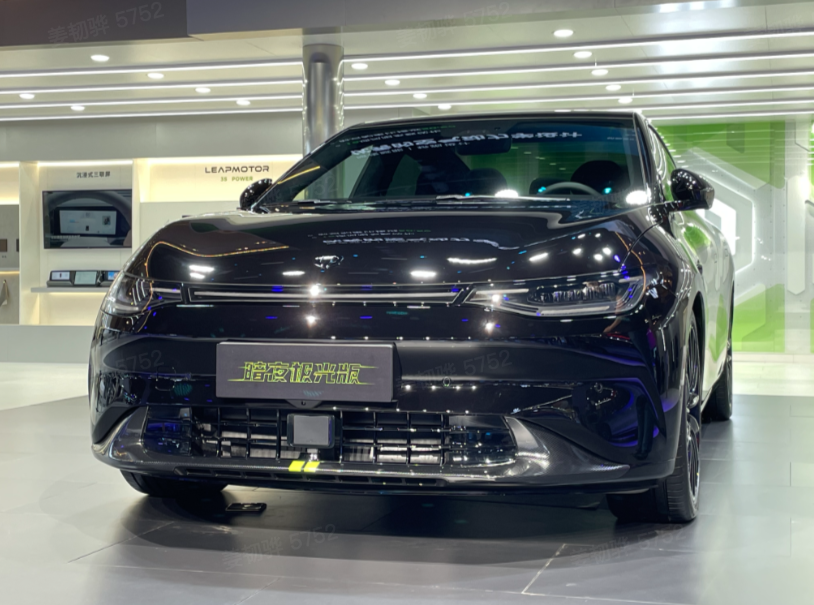
Ideal for Both Commercial and Personal Use
Cabin
Stepping into the cabin of the LI C01, you’ll find that the overall interior layout draws inspiration from the C11 design. The symmetrical center console features three screens, with the driver’s display and the passenger’s display both measuring 10.25 inches, while the center control screen comes in at 12.8 inches, all powered by a Qualcomm Snapdragon 8155 chip.

The main display screen has a simple and user-friendly interface, and through the buttons on the steering wheel, drivers can switch between different screens, such as navigation, energy consumption, and music, all of which are intuitive.
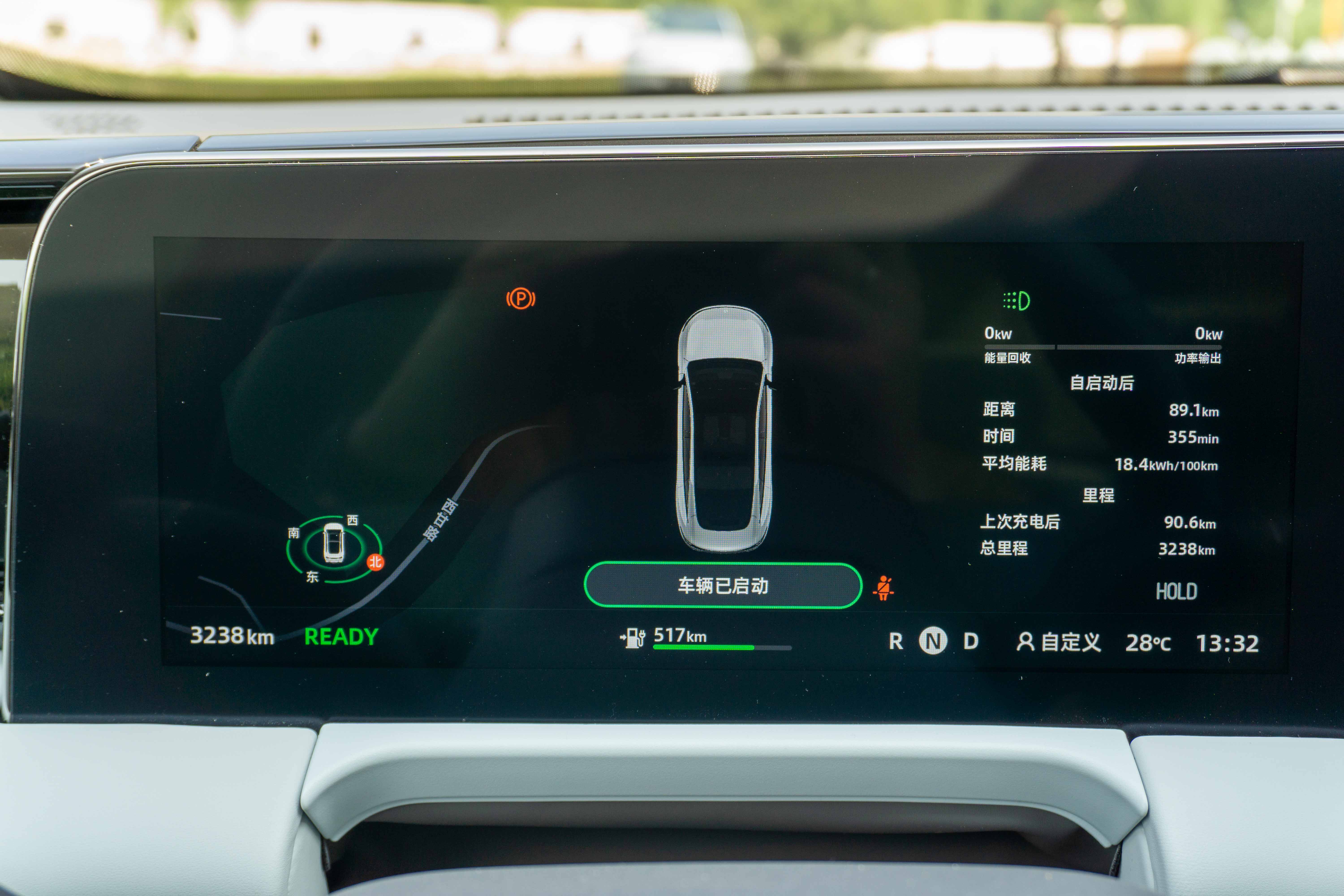
The layout of the center control screen is slightly different from that of the C11, with the little LI shape in the upper left corner transitioning into a 3D image, which is more delicate and adorable than the previous flat design.

However, it should be noted that the car we test drove was still in the PP stage and there is still some distance from the final delivery state. Therefore, some slight lags can be seen when dragging on the touch screen or tapping on it.
One noteworthy aspect of the software is that the infotainment system not only allows for app installation but also supports mini programs. Thanks to the underlying Android system, mini programs can be used directly without a separate app download, and there are plenty to choose from.
 On the co-pilot screen, there are five functions provided: iQiyi, music, navigation, car control, and mobile phone projection. The entertainment screen is very useful in actual experience. When you are driving in daily life, it is very easy to create a warm family atmosphere by playing a TV series or animation for your wife, child or elder sitting in the copilot seat. Even if you play a song or set a navigation through the copilot screen, communication between people occurs naturally.
On the co-pilot screen, there are five functions provided: iQiyi, music, navigation, car control, and mobile phone projection. The entertainment screen is very useful in actual experience. When you are driving in daily life, it is very easy to create a warm family atmosphere by playing a TV series or animation for your wife, child or elder sitting in the copilot seat. Even if you play a song or set a navigation through the copilot screen, communication between people occurs naturally.

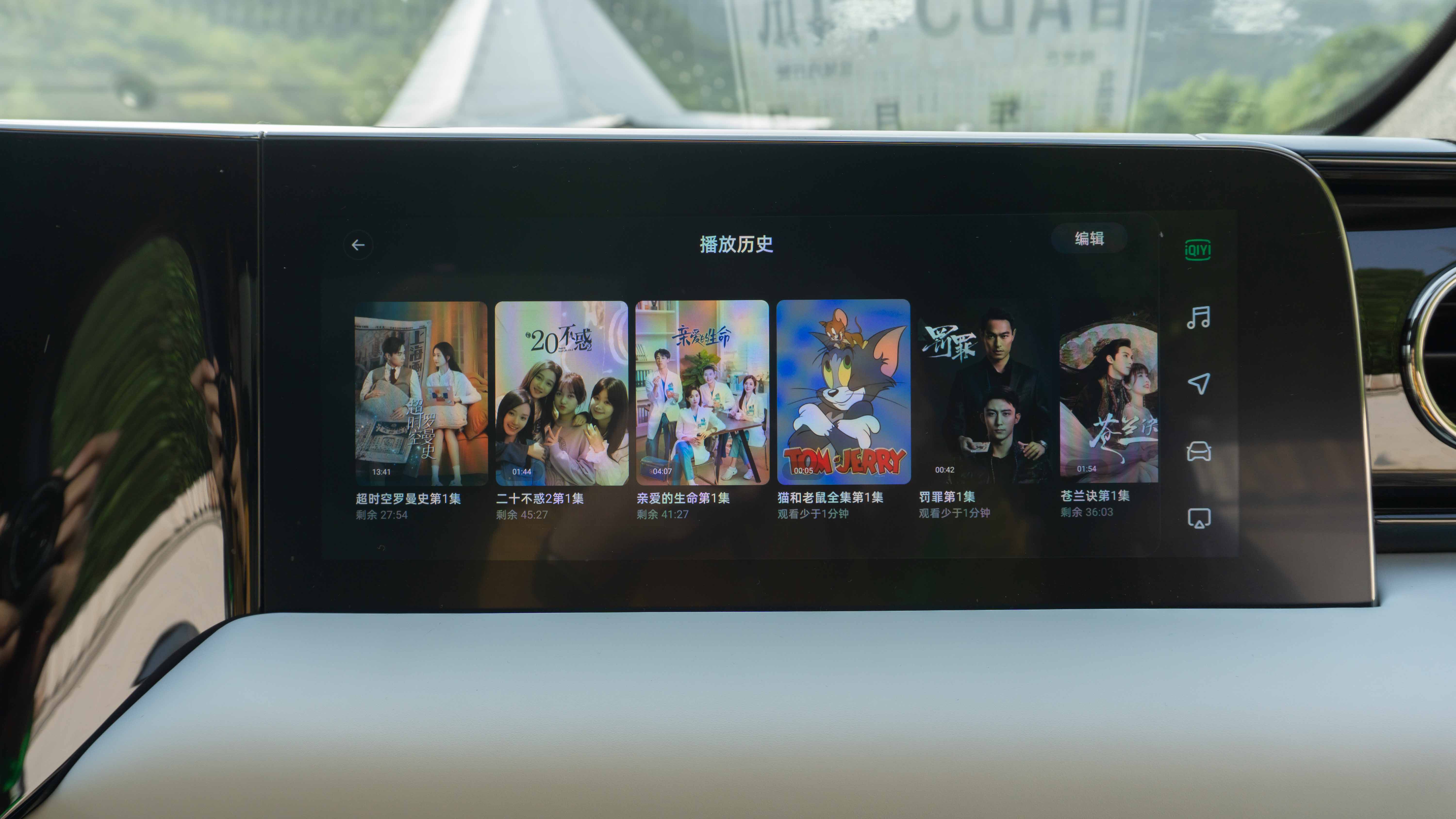
The air conditioning air outlet, cover plate, and cup holder under the central control screen also maintain the design style of C11. Design is considered for both the practicality of storage and the luxury feeling.
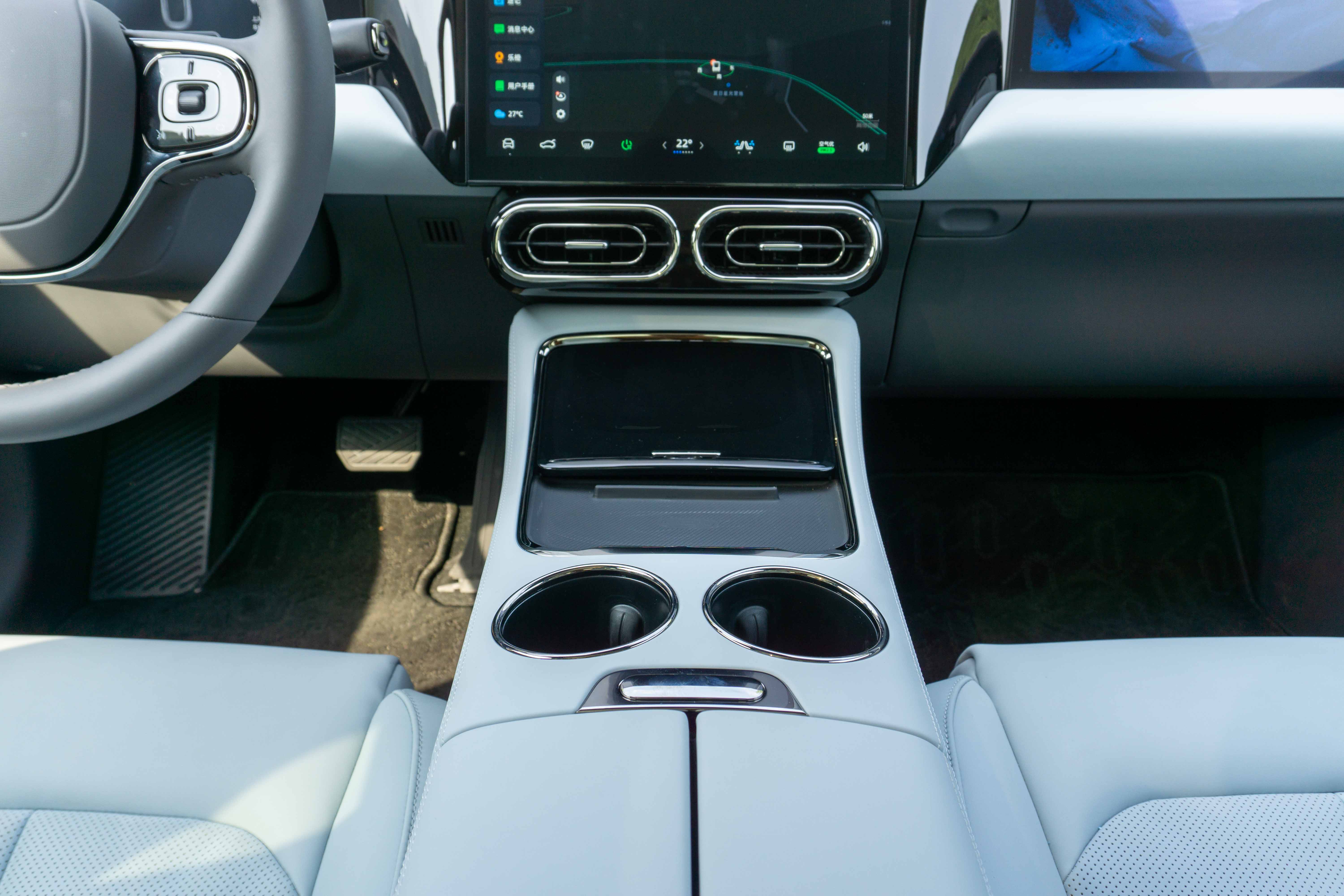
The smart thing about the armrest box is that there is a storage compartment that extends forward and backward. It can hold an iPhone 12, and there is more than enough space for wallets, coins, bills, etc. Moreover, when placed in the glove box, privacy is well protected, and bills will not fly everywhere.
The depth of the armrest box can also accommodate a small 330 ml bottled mineral water, and its space utilization is highly acclaimed. In addition, the inside of the armrest box is thoughtfully designed with velvet, which can protect objects from unnecessary scratches and ensure that small objects will not create too much noise while driving.

When I sat in the C01, I felt like I was in the C11 last September. To be honest, I was quite surprised by the interior design style at that time. Over the past year, more and more car companies have used three screens to make a big splash on the screen. Looking at this suite of interior design this year, although there are no surprises anymore, it still meets the consumers’ pursuit of technology.
Space
The C01 we photographed this time happens to have a sky blue interior, which is also the exclusive interior color matching of the C01, made of Nappa leather. The sky blue interior will appear slightly white under sunlight and has a noticeable blue hue in shaded or dim lighting environments. It looks refreshing, and it matches well with summer and coconuts. It is a color that young people will like.
The roof color of the vehicle is reef grey, and the material is a high-end suede fabric, which looks very luxurious visually and feels very soft to the touch. Especially when you open the makeup mirror, it will make you feel like you are in a luxury car.
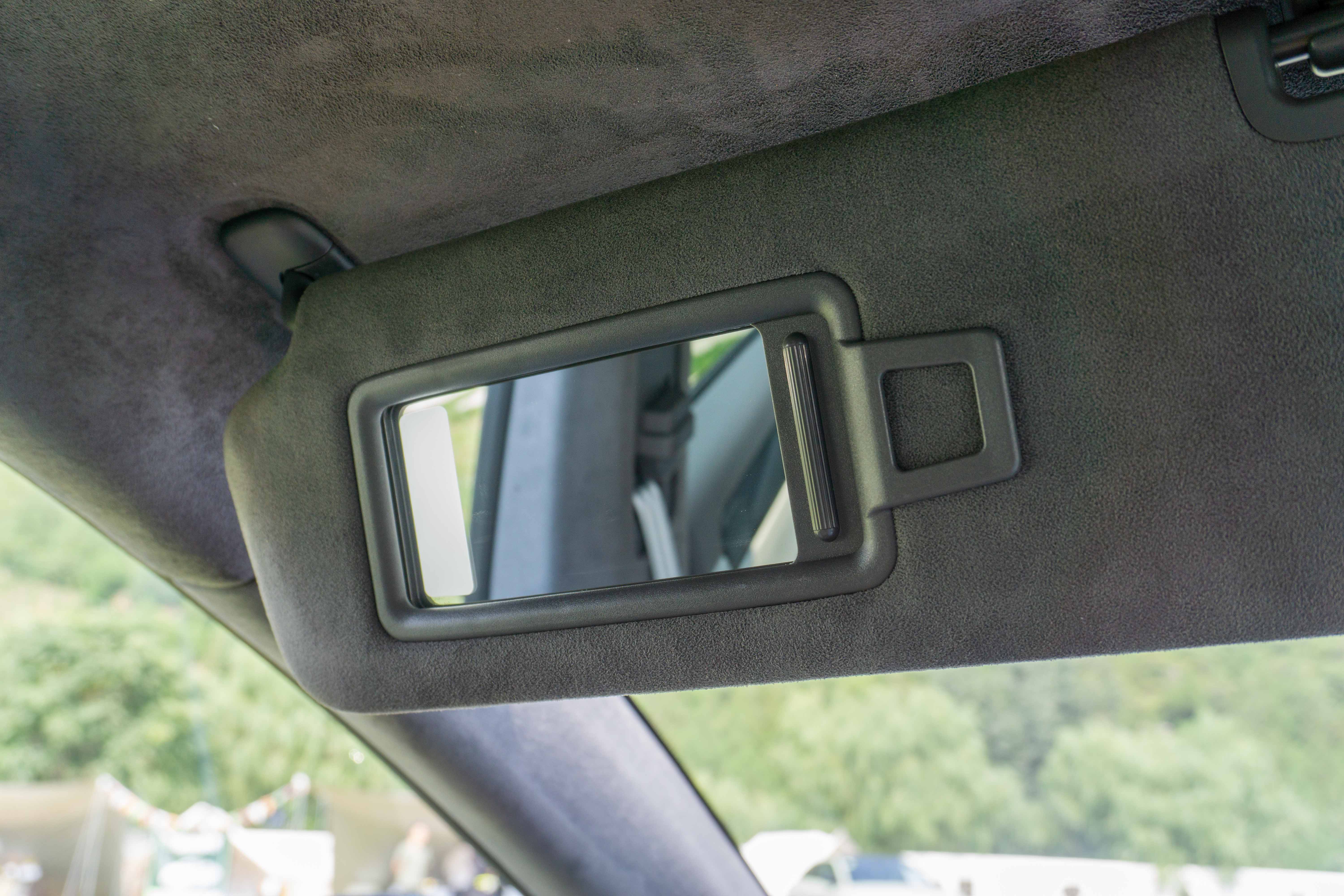
The seat style of the ORA Cat has also been slightly modified, with a hole under the headrest of the front row seats that resembles a four-point seat belt on a racing seat.
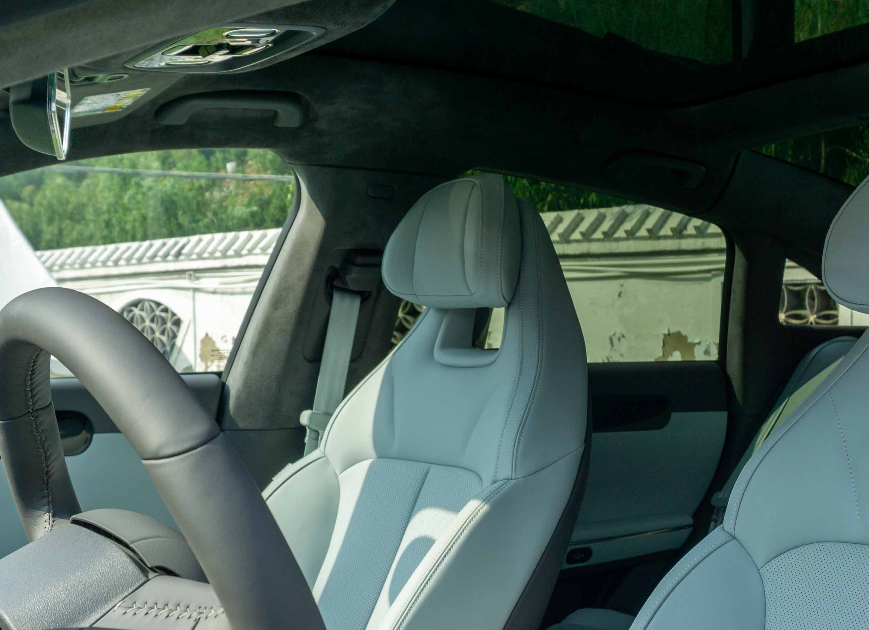
Interestingly, when sitting in the back seat, you can directly see the co-driver’s entertainment screen through the hole, which is very interesting.

In terms of riding experience, the ORA Cat’s seat cushion is relatively hard and cannot provide riders with a very comfortable wrapping feeling. And the seat angle adjustment is only six directions, and the seat cushion angle cannot be adjusted, which does not quite match the positioning of this vehicle. After an hour of high-speed driving, I felt a slight fatigue in my waist.

The main reason is that the lowest position of the lumbar adjustment did not touch my waist, but was above my waist. This caused my waist to be in an unsupported state, and the filling of the backrest was also relatively hard, so I felt fatigue after sitting for a long time.

It is worth mentioning that the seat configuration of the ORA Cat has finally reduced the noise of the seat ventilation. When I test drove the ORA Cat last year, after opening the seat ventilation of the front seats, I could hear a very obvious motor operation sound.
 For electric cars, the interior noise at rest is particularly noticeable. With the reduction of the ventilated seat noise, the silence of C01 has been greatly improved.
For electric cars, the interior noise at rest is particularly noticeable. With the reduction of the ventilated seat noise, the silence of C01 has been greatly improved.

In terms of space, the legroom in the back row is 2 fists and the headroom is 1 fist when I sit in a normal driving posture.
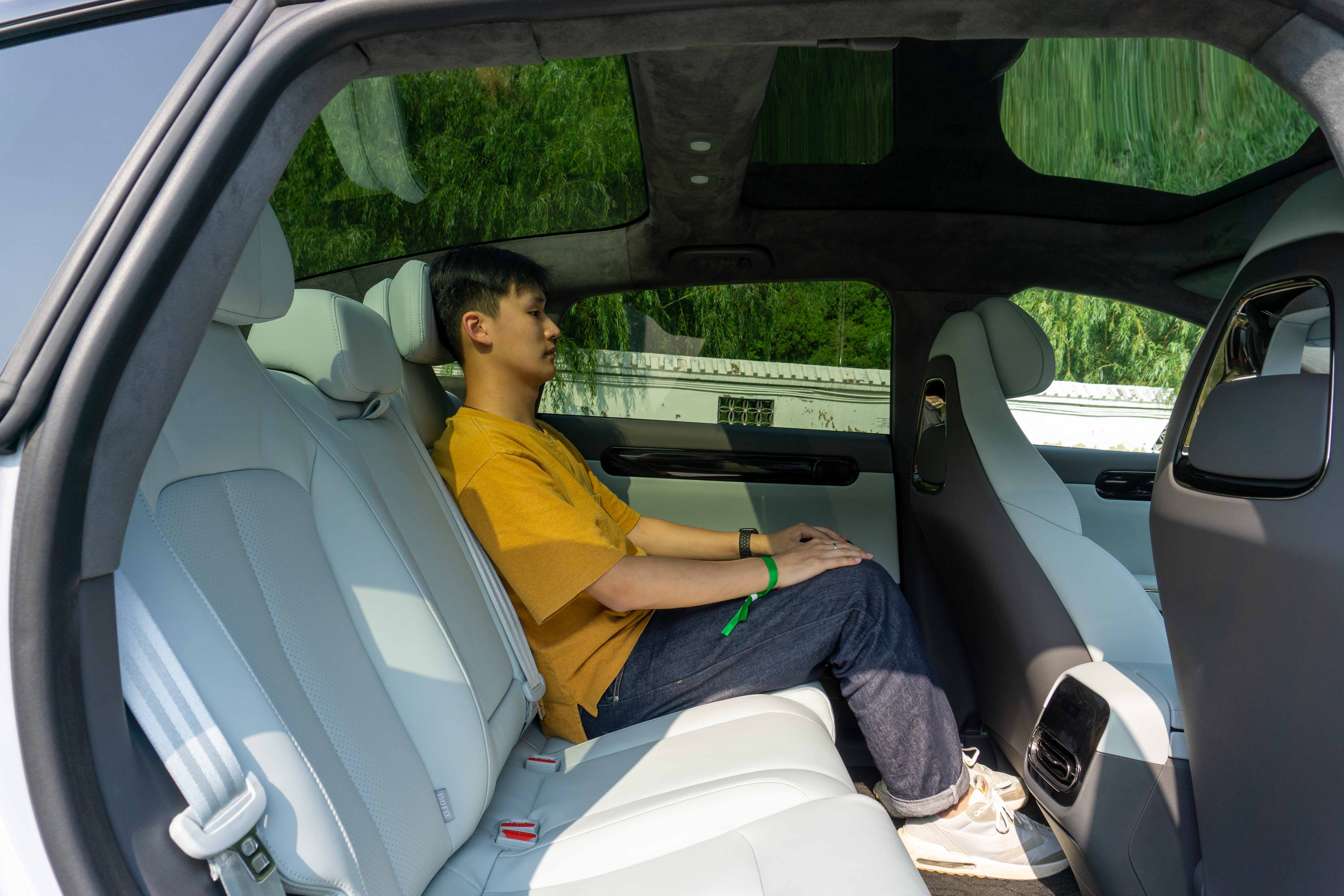

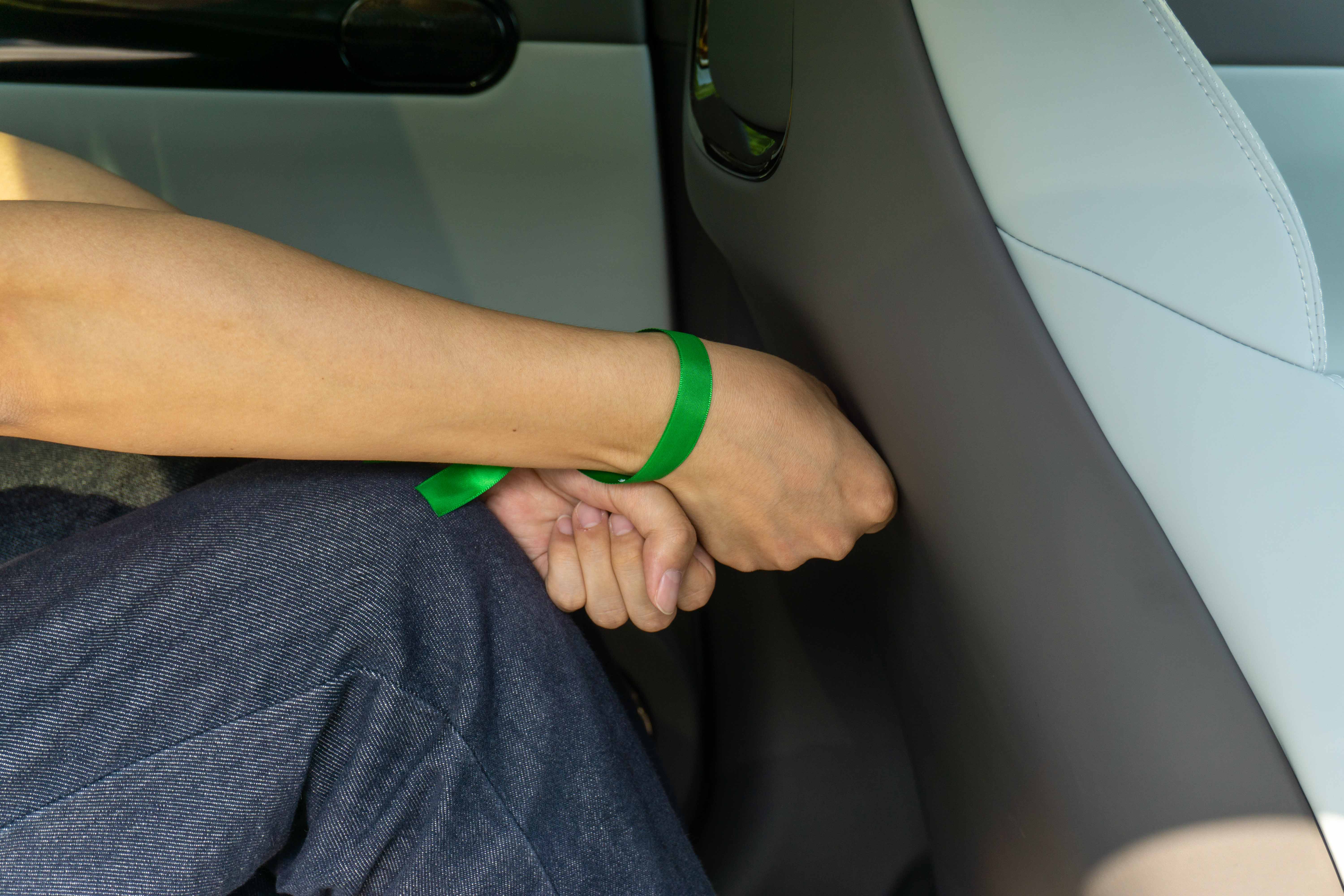
Using CTC technology and an arched body with a panoramic glass roof, Zeros run to “steal space”, and the actual perceived space performance is not cramped.

In terms of cushion filling, the rear seats are slightly softer than the front seats, and the comfort is even better. After measurement, the height of the rear seat cushion is 30 cm, and the length of the cushion is 54.8 cm, so there is no riding experience like a small stool in the rear seat.
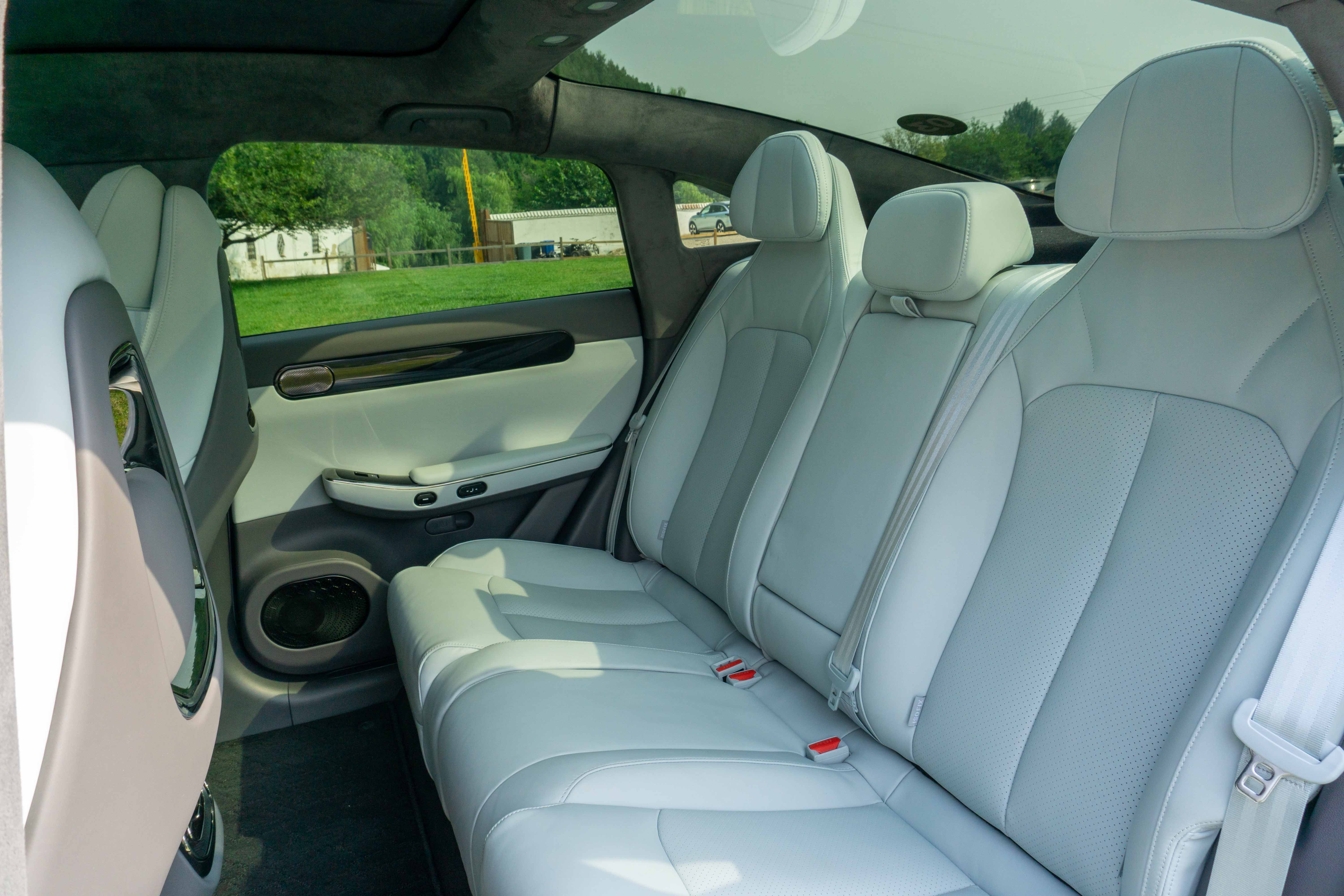
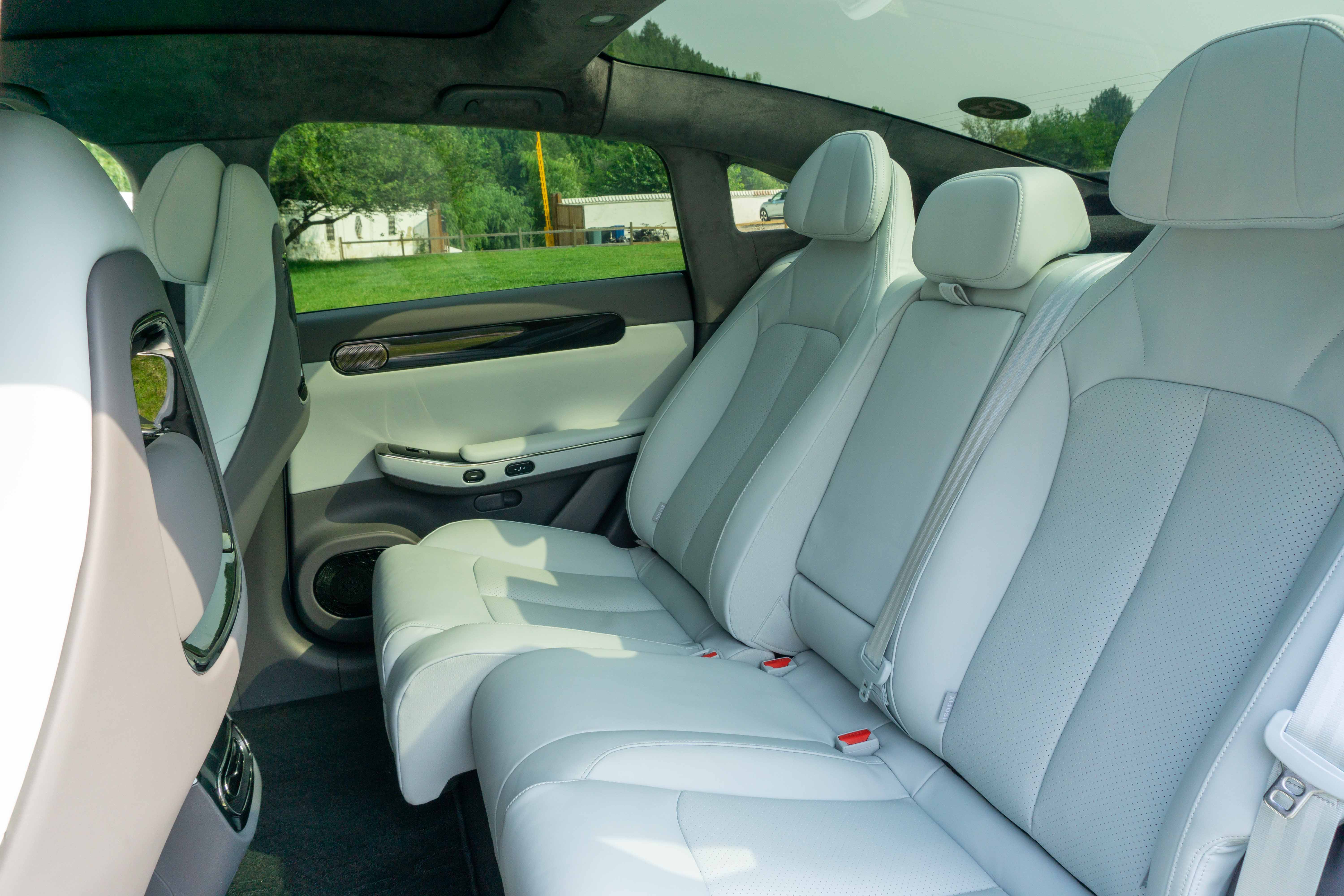
As a mid-to-large-sized car, Zeros run C01 even provides a special seat for the CEO in the right rear seat, which can adjust the position of the seat back and forth. The difference from other models here is that when C01 tilts the backrest angle backward, the seat cushion position must also be moved forward. The relationship between the two is that the backrest tilts back 10 degrees, and the boss’s seat moves forward by 10 cm.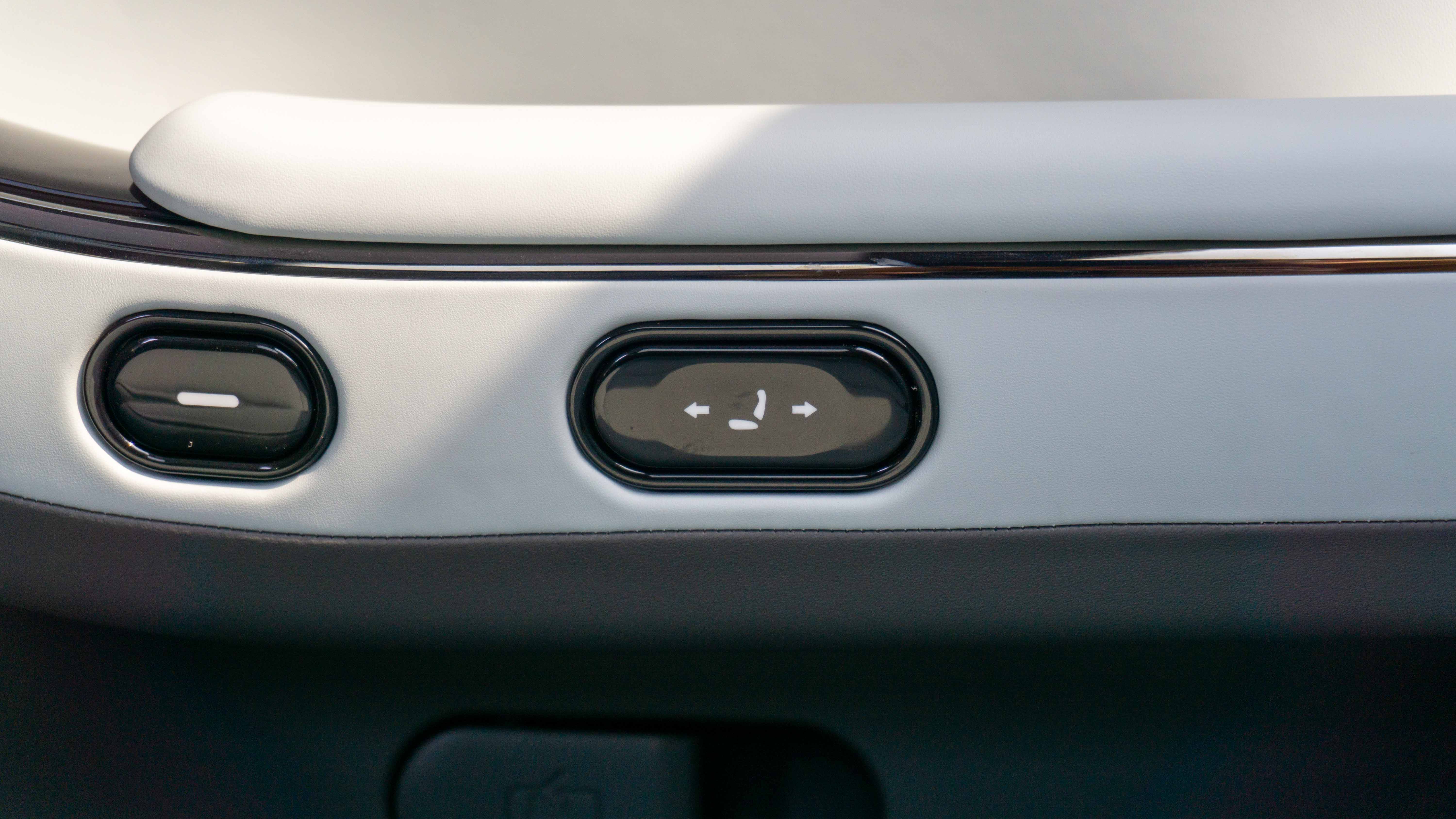
To avoid affecting the head space of passengers by only adjusting the angle of the backrest. However, extending the seat cushion forward will cause the legs to not stretch comfortably and form a bend of less than 90 degrees, which means that the seat cushion cannot fully support the thighs, and leg space is also sacrificed. Moreover, due to the layout of the sedan, the passenger’s feet cannot fully extend under the seat. Therefore, the overall sitting posture after extending to the end is not particularly comfortable.

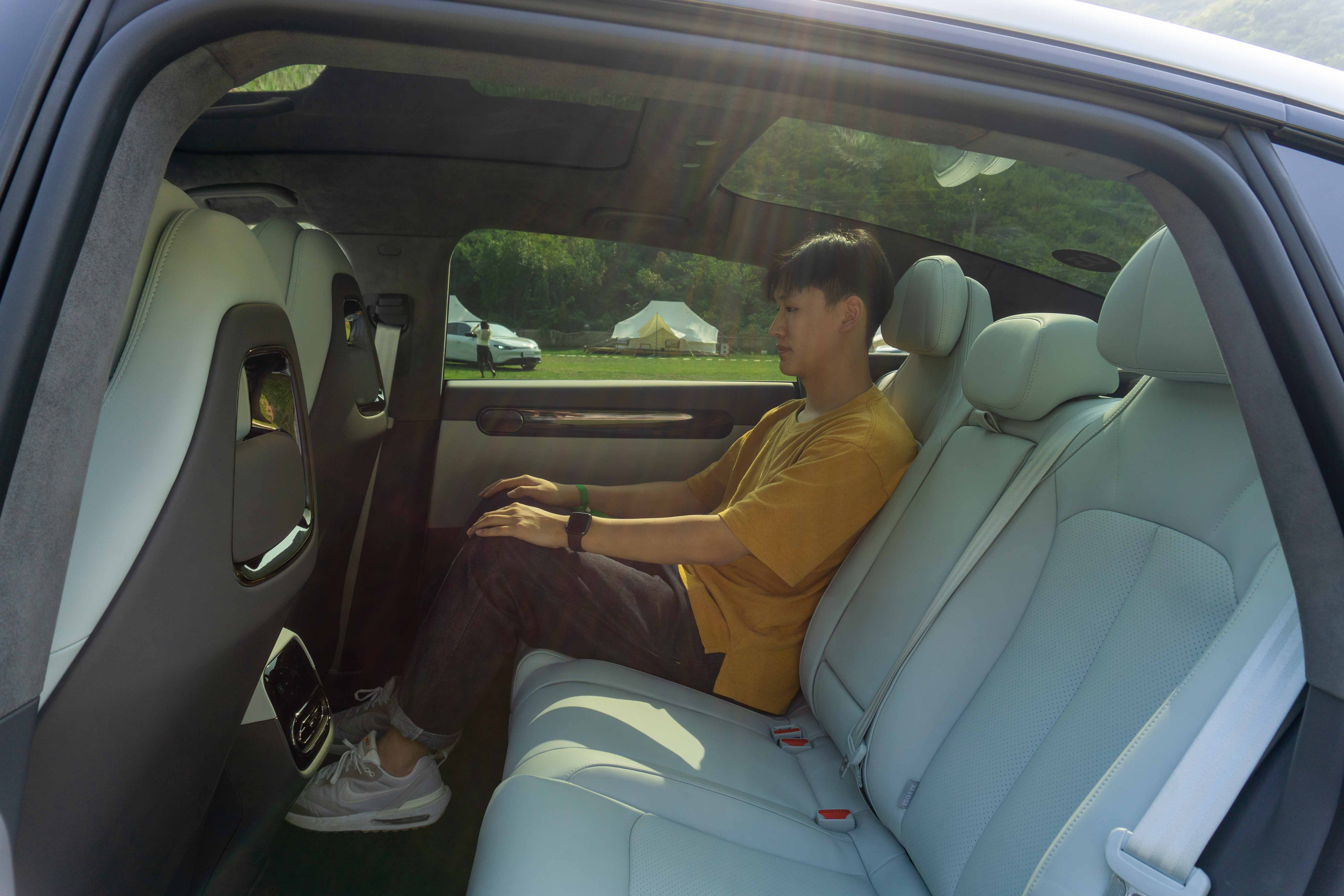
The roof of the ORA C01 adopts the popular panoramic sunroof design that is now popular on pure electric vehicles, and the manufacturer claims that it can isolate 99.9% of ultraviolet rays. If you are still worried about exposure to the sun in the summer, ORA also thoughtfully prepares an electric sunshade for you to choose from.
The panoramic sunroof design can to some extent expand the head space of the vehicle, but in my actual experience, the head of the C01 rear row is under the rear window glass. The rear window glass does not have heat insulation treatment similar to the sunroof, so in the outdoor temperature of 29 degrees, the CEO in the rear row will have the opportunity to sunbathe.
During the test drive, we also gave ORA a suggestion to gradually weaken the dark glass of the rear window from the top. This can ensure the visibility of the rear window at night and avoid the top of the rear seat passengers being exposed to sunlight.
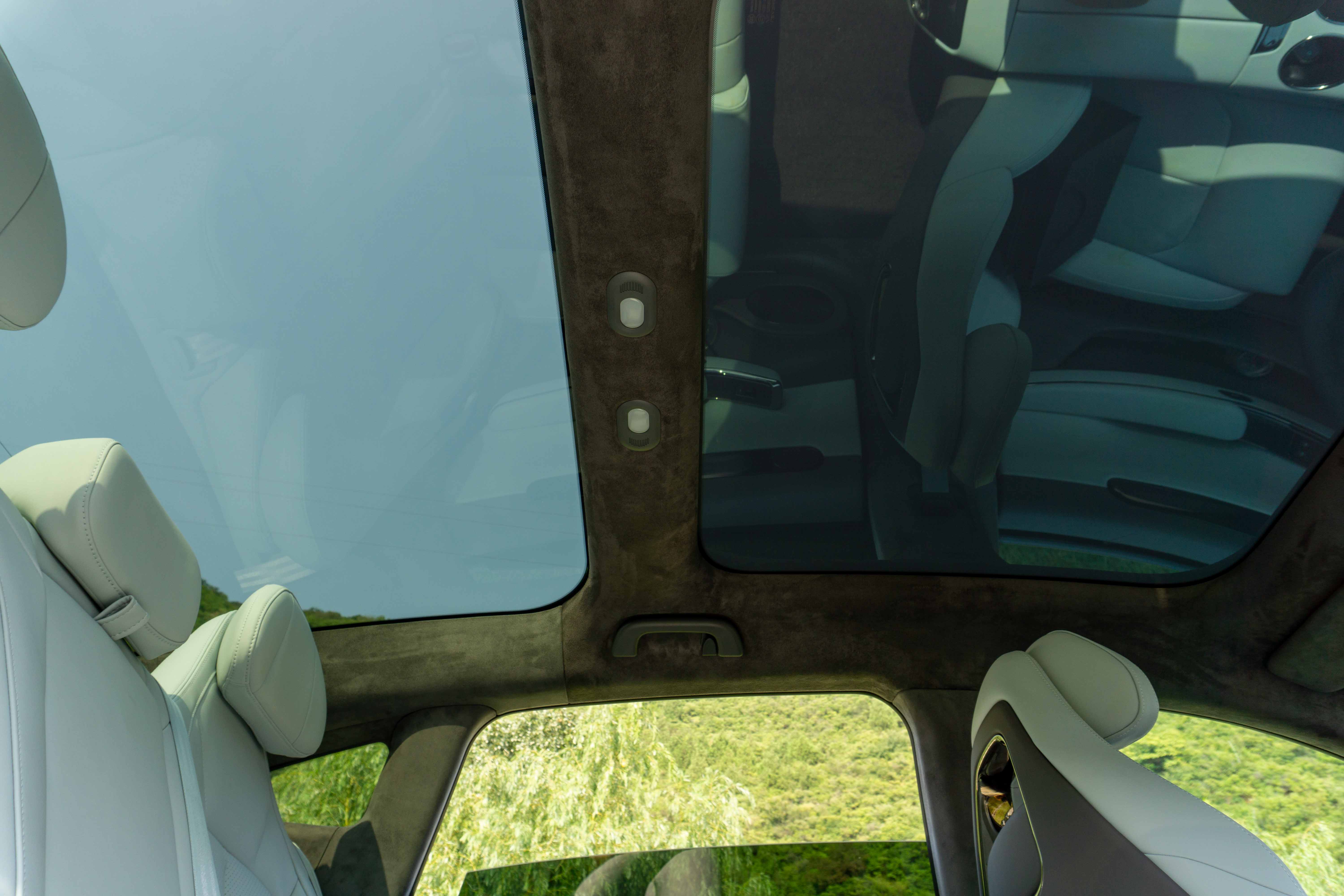
As for the interior of the ORA C01, there are significant improvements in details and luxury compared to the C11. The co-pilot screen, panoramic sunroof, rear CEO seat, all-Nappa leather wrap, suede roof, four aviation headrests, etc. all help ORA C01 establish its new flagship positioning to a certain extent.
As the positioning of a flagship mid-to-large-sized sedan, ORA C01 can meet simple business scenes while satisfying household scenarios. If you value the rear row configuration and space of the vehicle more in your car purchasing needs and occasionally need to pick up a customer or a leader while enjoying household needs, the ORA C01 will be the product with the lowest threshold among products of the same price.## Driving experience improved
Dynamic performance
The LI ONE (C01) has been released for more than 4 months, and this time we finally got the chance to experience it dynamically.
Before driving, I have to mention that I personally really like the grip sensation of the C01’s steering wheel. The grip is very full, and the filling of the steering wheel is just right, not too stiff or too soft. At the same time, the delicate leather wrap can also leave a good impression.

After starting to drive, the steering feel of the LI ONE (C01) is relatively neutral. This is reflected in both the resistance and the directional aspects. First of all, the steering damping force of the C01 in comfort mode is most suitable for daily driving. It will not be so light that it can be controlled with a finger even at low speeds, nor will it be so heavy that it requires the use of muscle strength. The overall feel is similar to that of the current Mercedes-Benz sedans.
Secondly, regarding directional stability, the steering of the C01 does not feel particularly sporty or tight without adjustment. Therefore, when running at high speeds, it is easy to make slight adjustments, even if you run over a manhole cover, and the slight rotation of the steering wheel will not affect the stability of the vehicle. The steering of the C01 can also transmit clearer road feedback, which is well done in communication with the driver.

At the same time, the range of the steering angle is not particularly large. There will be no obvious steering movements within 3 degrees of the center position of the steering wheel. After 3 degrees, the steering movements gradually become clear, and the body begins to make corresponding movements with changes in the angle. The linearity gives people the feeling that it is much better than the C11.
Overall, the LI ONE (C01) has done well in making the steering feel more luxurious.

The damping calibration of the acceleration pedal of the C01 is also very linear. The 200 kW power of the rear motor does not surge in the front stage. The power output corresponds to the amount of force applied by the driver. The driver can have a good power output expectation when driving.When you press the accelerator pedal to the floor, the perceived acceleration of the ZERO RUN C01 is consistent with the official time of 7.18 seconds, and the power performance is entirely sufficient for legal speeds of 120 km/h or less in China, whether you are young or older. Both the ability to overtake and accelerate and the response time will not disappoint you.
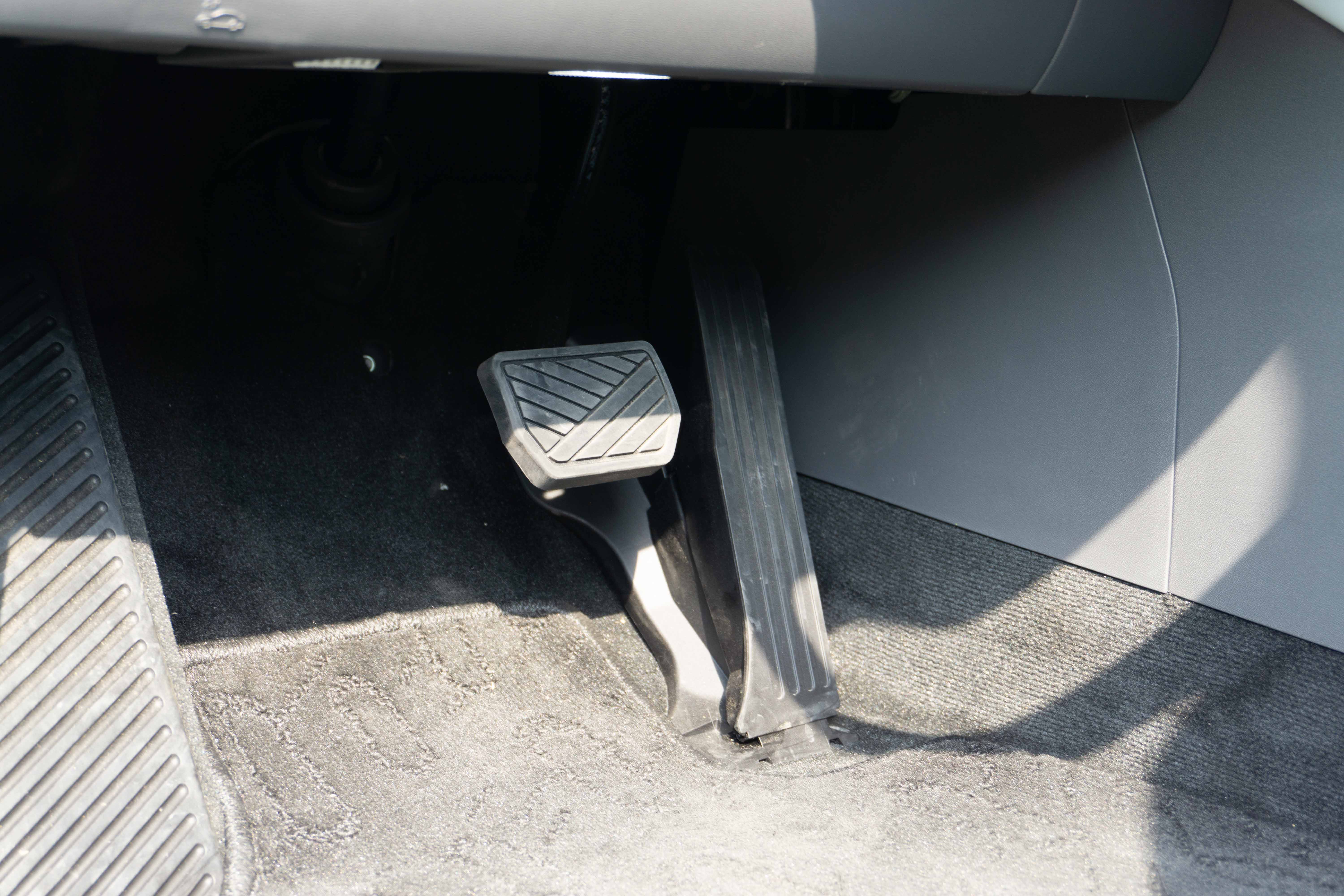
However, the brake pedal may feel a bit stiff, and it can be easy to misjudge the intensity at first. The braking force is not obvious when you press the pedal down 1/4 of the way, but after passing 1/4, the braking force will suddenly release, causing a more abrupt braking effect. It takes some getting used to the style of the brake pedal. After all, no one wants unnecessary panic for their bosses or family due to sudden braking.
Fortunately, the power recovery of the ZERO RUN C01 is worthy of praise. In the mid-range power recovery mode, when you release the accelerator pedal, the vehicle will slide very smoothly, without any uncomfortable dragging sensation for passengers. Moreover, the energy recovery can reach a power of 40 kW at 100 km/h.
Once you get used to the power recovery and braking pedal intensity in everyday driving, you can start and stop the vehicle very smoothly.

As for the chassis, the overall comfort of the ZERO RUN C01 is good, with significant improvements compared to the C11. When encountering small bumps, Chinese-style sinking manhole covers, and white speed bumps, the vehicle shows a lot of resilience. The suspension is very crisp and retains the necessary road feel.
However, once the vehicle passes over small hills or rippled road surfaces at high speeds, the disadvantage of the chassis tuning becomes apparent. As the front and rear axles of the vehicle bounce at different frequencies, the car goes over small hills smoothly when the front axle is compressed, but when the rear axle passes over it, there is a more significant bouncing and up-and-down movement than at the front axle. After the vehicle passes over small hills or rippled road surfaces, the back of the car still swings, causing the headrest to come into contact with the passenger’s head.

However, it should be noted that the ZERO RUN C01 we test drove was still in the PP phase of the trial, and it was not a final delivery vehicle with full calibration. The experiences described above are only based on the current condition of the vehicle. We hope that the vehicle will be improved based on the issues we have discovered when it is finally delivered.With regards to the overall driving quality of the Zero Run C01, I have seen an improvement. Leaving aside the lower-priced T03, the C01 has achieved a level of steering feel and chassis comfort that surpasses that of the C11. In addition, with the support of CTC technology, the vehicle’s dynamic performance has achieved the “integrity” that everyone has been talking about. Over the past year, Zero Run has indeed allowed the C01 to become the flagship model in terms of driving control.
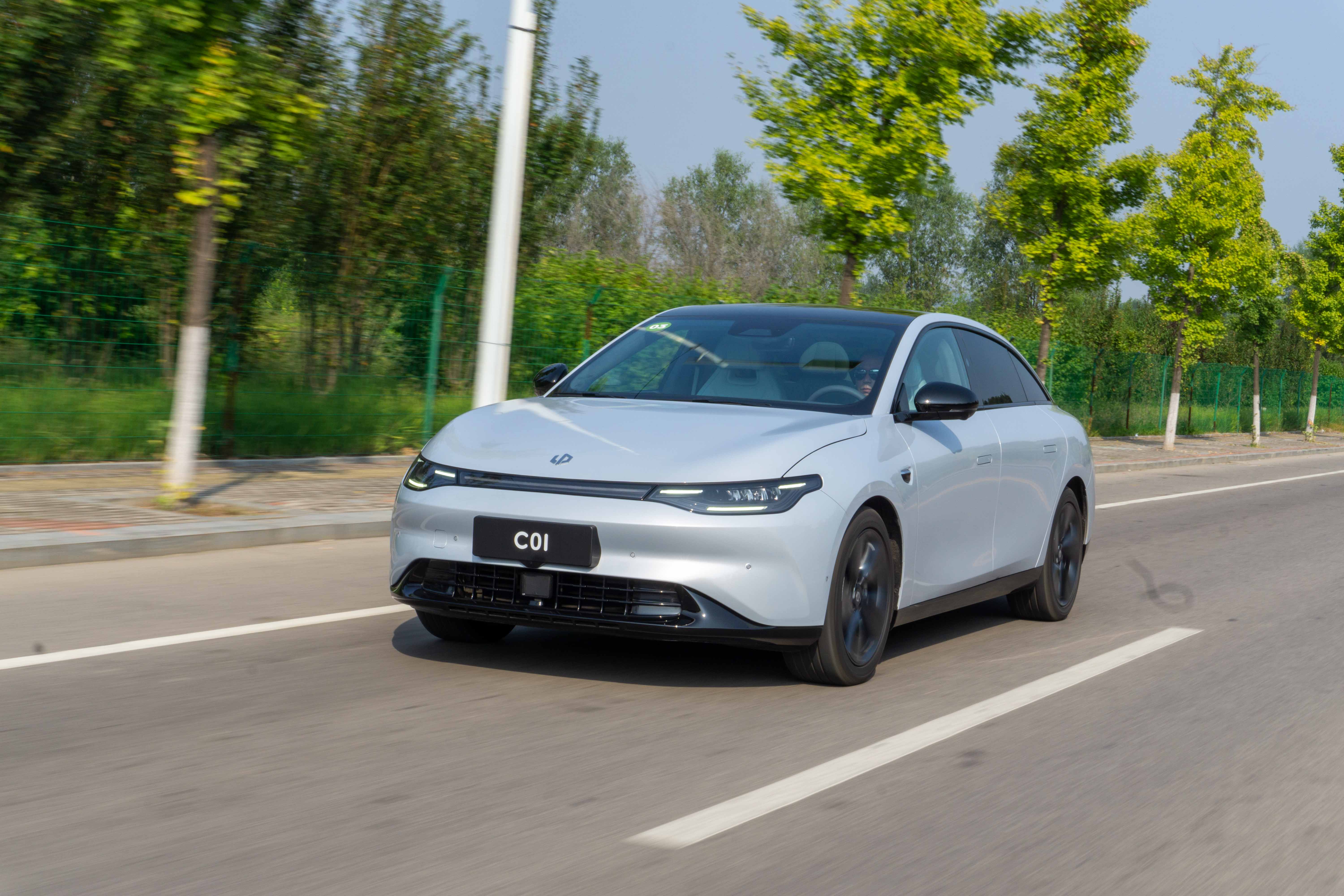
Energy Consumption
With a drag coefficient of 0.226 and a 90 kWh large battery, the Zero Run C01’s endurance has a basic guarantee. During the test drive, I drove this car as if it were my own.
First, let’s talk about the road running conditions. We departed from Beijing Shengquan Mountain, took the Jingmi Expressway to the Daguang Expressway, and then took the Jingping Expressway to Terminal 2 of Beijing Capital International Airport. The total distance was 59.3 km, with a ratio of approximately 1:9 between the ground and the expressway. The vehicle was driven at a basic speed of 120 km/h on the expressway. The outdoor temperature was 29 degrees Celsius, the air conditioning was set to 22 degrees, and there were three adult males in the vehicle with a curb weight of 2.3 tons.

After driving for 1.1 hours, the vehicle’s display showed an average energy consumption of 18 kWh/100 km. When we started, the display showed a remaining endurance of 491 km, and when we arrived, the display showed a remaining endurance of 411 km. After driving 60 km, the displayed endurance decreased by 80 km. According to this calculation, the actual endurance range of the full-electric CLTC 717 km model is about 537 km. This provides a reference for endurance.
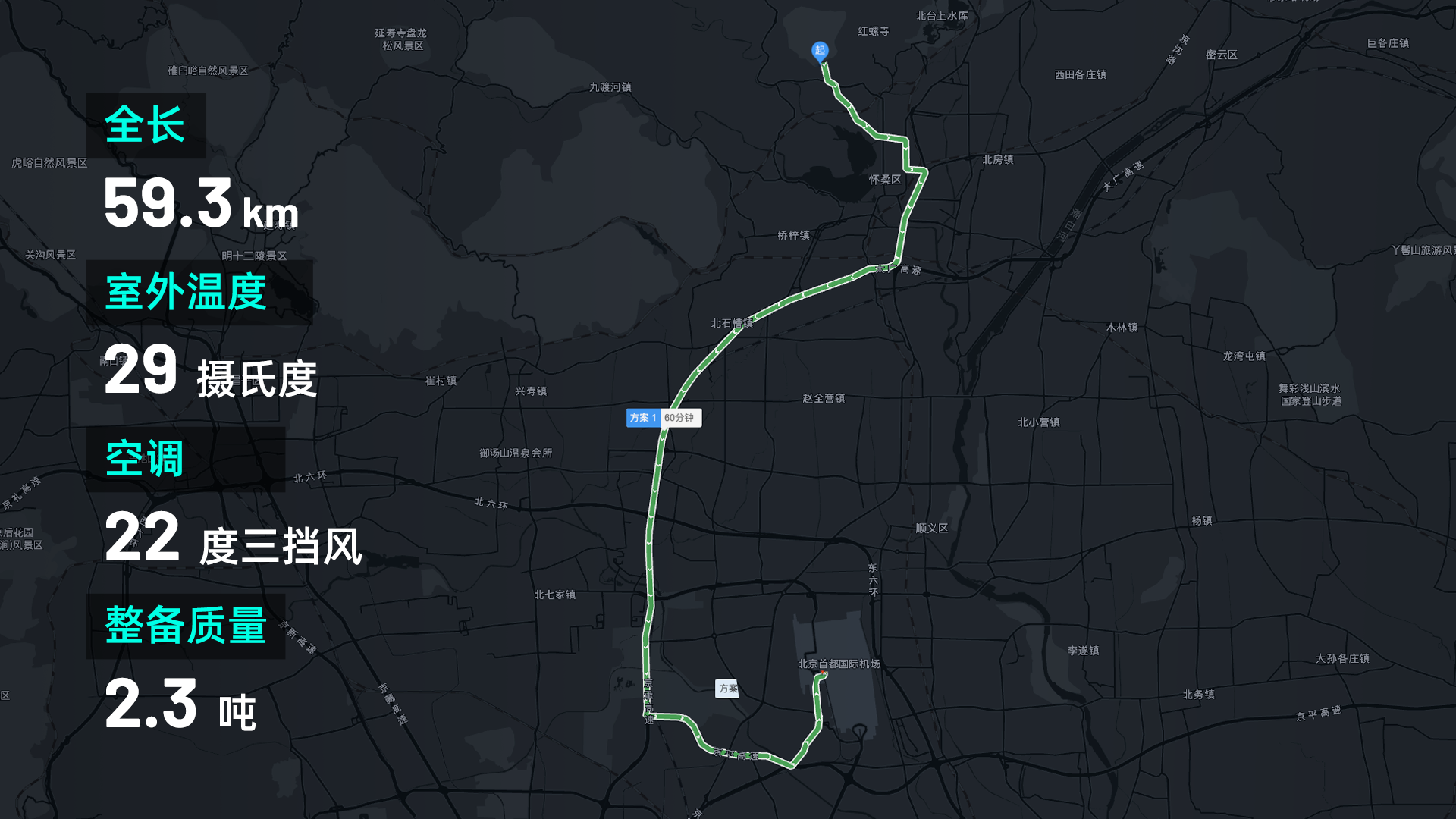
If we obtain the delivery version of the Zero Run C01 in the future, we will also conduct a more detailed endurance test according to our own testing standards. However, based on the current experience, the endurance of the Zero Run C01 is already at a good level.
Driver Assistance
During the drive from Shengquan Mountain to the airport, most of the roads were expressways, and I also took the opportunity to experience the driver assistance system of the Zero Run C01 on this closed road section.
On the hardware side, the Leapmotor C01 adopts the same assisted driving hardware and scheme as the C11, and is equipped with two Lingxin 01 chips jointly developed with Dahua, with a total computing power of 8.4 TOPS. With 28 perception hardware devices, including 5 millimeter-wave radars, 1 forward binocular perception, 4 lateral perception and 1 high-precision map, it can complete 23 assisted driving functions, including intelligent cruise assist, high-speed assist and other functions.
In terms of functionality, ACC, LCC, and lane change by instruction have been achieved.
In actual experience, the Leapmotor C01 already has more mature capabilities on closed roads. After assisted driving is turned on, the acceleration and deceleration of ACC are relatively gentle, with 4 adjustable gears and obvious changes between each car distance. However, in daily use, the 2nd gear is used more frequently, and in situations where the following distance to the front vehicle is far and the traffic flow is large, it is easy to be cut in by other vehicles in traffic.

When the lane lines are clear, LCC can accurately keep the vehicle in the middle of the lane, but if you pursue being in the middle too much, you will find that the steering wheel of the vehicle is always making fine adjustments, and there is still a obvious mechanical feel.
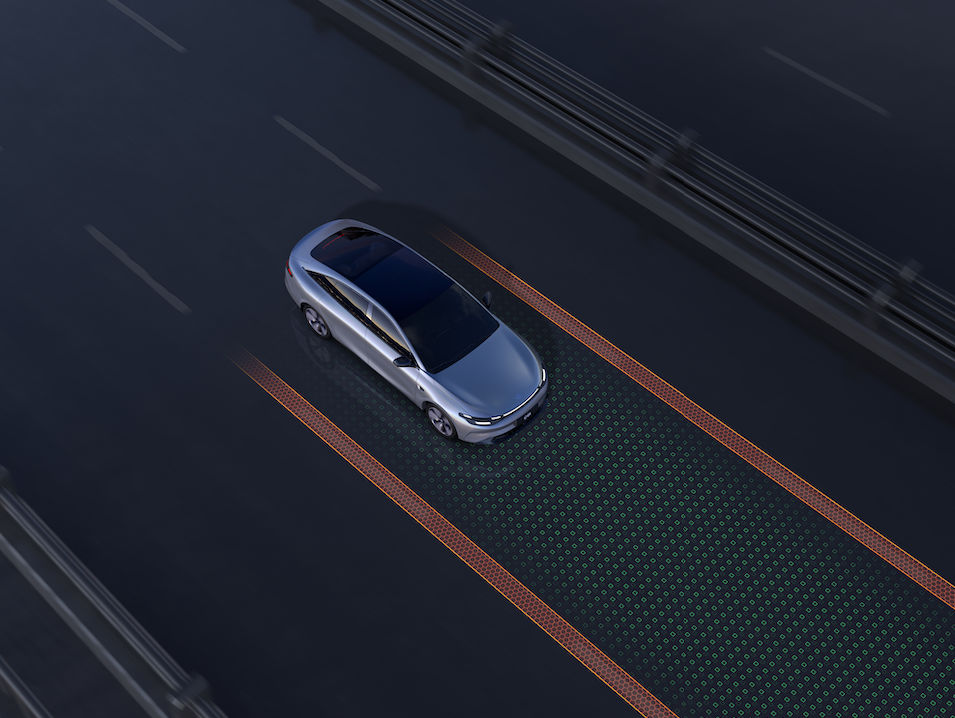
Another point that needs to be mentioned is that the steering wheel of the Leapmotor C01 does not have grip and capacitive sensors, only torque sensors. However, after assisted driving is turned on, the steering wheel becomes as hard as Tesla, as if you have locked the car and opened the steering wheel lock.
This leads to the fact that when the vehicle prompts to turn the steering wheel, the driver hardly turns the wheel, to be more precise, perhaps only 1-2 degrees. So when the steering wheel is turned lightly, the system cannot recognize it, and when the steering wheel is turned hard, LCC is immediately turned off, and the point that is just right is difficult to grasp accurately.
As a prototype vehicle, it is not surprising to have such problems. We hope that after delivery, the calibration of driver monitoring can be optimized. If DMS can be linked to assisted driving without changing the cost, perhaps the user experience can be enhanced.According to the official news revealed by Lynk & Co, C11 equipped with a unified set of hardware and software will push high-speed assisted driving in the fourth quarter of this year, while C01 will be launched in the first quarter of next year. Collaborating with high-precision map data for assisted driving may also improve the current level of assisted driving capabilities.
Conclusion
In the press conference on May 10, Lynk & Co positioned the C01 to cater to a broad user group, including young people with two generations and middle-aged people with young and old, as well as those with commercial requirements. Through practical experience, it is not difficult to find that Lynk & Co C01 wants to become a “bucket-type” player as much as possible by providing ample space, boss keys, luxurious configurations, and colorful car paint options.

For Lynk & Co, the positioning of C01 is in the mid-to-high-end car market, as it’s the flagship product to embody the brand philosophy. The goal of C01 is to become the sales benchmark and value benchmark in the sub-segment market of 150,000-300,000 CNY. Therefore, the price is low, with an entry-level price of 180,000 CNY; it is balanced with a 717 long-range version, and it has performance, such as the 3.66-second Aurora Night version that can reach 0-100km/h acceleration.
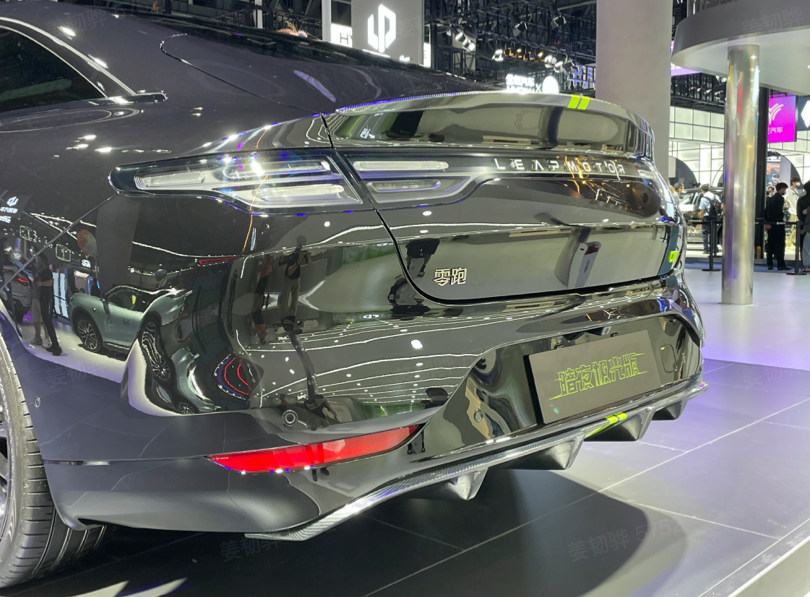
For users, this price range already includes XPeng P7, BYD Han EV, Tesla Model 3, and upcoming BYD Hippo, Changan Shenlan C385, and NETA S. Most of these models cater to the sports routes, when users want to choose a car with space, range, configuration, luxury, and can compromise the brand, Lynk & Co C01 becomes one of the few options in this price range.
However, when the vehicle’s price approaches 300,000 CNY, its attributes are no longer just a means of transportation. Instead, the social attributes become increasingly important to consider, such as brand, service, and supporting facilities. This is also the direction that a few first-tier new energy independent brands are striving for.

As Lynk & Co’s flagship product, C01 needs more than just marketing gimmicks to support sales. During the period of Lynk & Co’s continuous branding and service polishing, whether C01’s 100,000 orders will make it a “real hit” or not will have to wait until September 28 for the final surprise pricing.
This article is a translation by ChatGPT of a Chinese report from 42HOW. If you have any questions about it, please email bd@42how.com.
